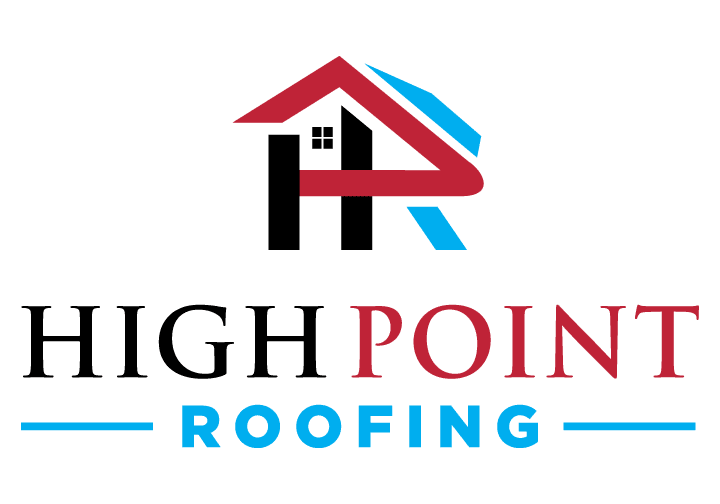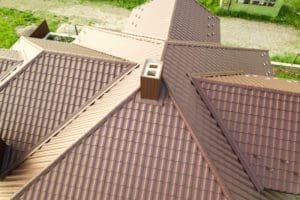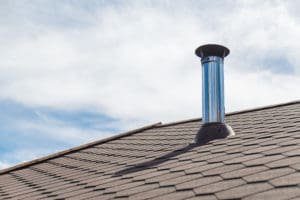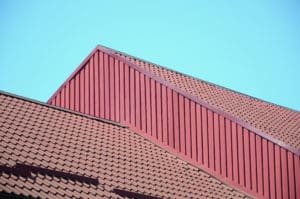Dealing with Fallen Trees: What You Need to Know
At High Point Roofing, we understand the havoc a fallen tree can wreak on your roof and gutters, leading to extensive damage that demands immediate attention. Recognizing the impact of fallen trees on your roofing and gutter systems is essential in assessing the damage’s severity and taking the right steps for repairs. In this article, we’ll explore how fallen trees affect your roof and gutters, discuss immediate and long-term effects, offer a step-by-step guide for damage assessment, provide DIY solutions for minor repairs, explain when to engage a professional, and share preventive measures to safeguard your roof and gutters from future tree damage.
Understanding the Impact of Fallen Trees on Roofs and Gutters with High Point Roofing
Fallen trees can inflict various damages on both your roofs and gutters, compromising their structural integrity and functionality. To truly comprehend the extent of the damage, let’s break down the anatomy of roof and gutter damage caused by fallen trees.
The Anatomy of Roof and Gutter Damage
When a tree falls onto your roof, it can dislodge or break roofing materials, such as shingles or tiles. The impact can create punctures, cracks, or dents in your roof, leading to water leaks and potential structural problems. Additionally, fallen branches can harm your gutters, causing blockages and improper drainage.
Now, let’s delve deeper into the specific effects of fallen trees on roofs. The weight and force of a falling tree can cause significant damage to your roof’s surface. Shingles may be torn off, exposing the underlying layers to the elements. Tiles can crack or break, leaving vulnerable areas that are susceptible to water infiltration. The impact can also displace flashing, which is essential for preventing water from seeping into your roof’s joints and edges.
Moreover, fallen trees can create punctures in your roof, especially if the branches are sharp or have jagged edges. These punctures can compromise your roof’s ability to keep out water, leading to leaks and potential structural damage. In severe cases, the impact can even cause structural beams or trusses to shift or break, jeopardizing the overall stability of your roof.
Now, let’s shift our focus to the impact of fallen trees on gutters. When branches or the tree itself land on gutters, they can cause significant blockages. Leaves, twigs, and debris can accumulate, preventing proper water flow and causing overflow. This can result in water spilling over the sides of the gutters, potentially damaging the siding, foundation, or landscaping around your house. Additionally, the weight of the fallen tree can cause the gutters to detach from the roof, further exacerbating the drainage issues.
Immediate and Long-Term Effects of Tree Damage with High Point Roofing
The immediate effects of tree damage are often evident, such as visible roof and gutter damage, water leaks, or blocked gutters. However, the long-term effects can be more insidious. A compromised roof and gutters can result in water infiltration, which can lead to rot, mold, and other structural issues if not addressed promptly.
Water leaks caused by fallen trees can seep into the attic or crawl spaces, promoting the growth of mold and mildew. These fungal infestations not only compromise the air quality in your house but can also cause health issues for the occupants. Additionally, the moisture from the leaks can lead to wood rot, weakening your roof’s structure and potentially spreading to other areas of your house.
Furthermore, if the fallen tree damages the gutters and prevents proper drainage, water can accumulate around the foundation of your house. This can lead to foundation cracks, erosion, and even basement flooding. The excess moisture can also attract pests, such as termites or mosquitoes, which can further damage the property and pose health risks.
It is crucial to address the immediate and long-term effects of fallen trees on roofs and gutters promptly. Timely repairs and maintenance can prevent further damage, protect the structural integrity of your house, and ensure the safety and well-being of its occupants.
Steps to Assess the Damage with High Point Roofing
Before attempting any repairs, it is crucial to assess the extent of the damage to ensure safety and determine the appropriate course of action.
Assessing the Damage after a Fallen Tree Incident with High Point Roofing
Assessing the damage after a fallen tree incident is not only important for the safety of those involved but also for the overall repair process. By thoroughly inspecting the affected area, you can identify any potential hazards and understand the scope of the damage.
Safety Measures Before Inspection with High Point Roofing
Prioritize your safety by inspecting the area around the fallen tree for any immediate hazards. Ensure there are no hanging branches or unstable structures that could pose a risk during your assessment.
Take a moment to evaluate the stability of the tree itself. Look for any signs of further movement or shifting that could indicate a potential collapse. It is essential to exercise caution and, if necessary, seek professional assistance to safely remove the tree.
Identifying Visible and Hidden Damages with High Point Roofing
Thoroughly inspect your roof and gutters for visible damages such as missing or broken shingles, dented gutters, or detached downspouts. These visible signs of damage can provide valuable insights into the severity of the incident.
However, it is important not to solely rely on the obvious signs. Hidden damages may not be immediately apparent, but they can have long-term consequences if left unaddressed. Take the time to carefully examine the flashing around the roof edges and chimneys, as well as the roof support structures. Look for any signs of compromise or weakness that could lead to further issues down the line.
Remember, assessing the damage accurately is crucial for determining the appropriate course of action. If you are unsure about the extent of the damage or how to proceed, it is always recommended to consult a professional. They have the expertise and experience to provide an accurate assessment and guide you through the necessary repairs.
DIY Solutions for Minor Roof and Gutter Repairs with High Point Roofing
If the damage is minor and you have the necessary tools and skills, some repairs can be done independently.
Tools and Materials Needed for Repairs with High Point Roofing
Before embarking on any DIY repairs, gather the essential tools such as a ladder, safety gloves, a pry bar, roofing nails, sealant, and replacement shingles or gutter sections. Ensure you have the correct materials for your specific roofing type.
Step-by-Step Guide to Fixing Minor Damages with High Point Roofing
Start by carefully removing any debris or fallen branches from your roof and gutters. Replace missing or damaged shingles by adhering to proper roofing techniques. Repair dented gutters by repositioning or replacing sections as needed. Apply sealant to any cracks or punctures to prevent water leakage.
When to Call a Professional: Evaluating Damage Severity with High Point Roofing
In some cases, it is best to seek professional help to ensure the damage is properly evaluated and repaired.
Signs Your Damage Needs Professional Attention with High Point Roofing
If the damage is extensive, involves structural issues, or if you are unsure of the extent of the damage, it is wise to call a professional. Signs that indicate professional assistance is needed include large-scale roof or gutter damage, water leaks, compromised roof support, or if you feel uncomfortable attempting repairs yourself.
Choosing the Right Repair Service with High Point Roofing
When selecting a professional repair service, consider their reputation, experience, and licensing. Request references and obtain multiple quotes to ensure you are receiving the best service at a fair price.
Preventive Measures to Protect Your Roof and Gutters from Tree Damage with High Point Roofing
While it is impossible to entirely eliminate the risk of tree damage, taking preventive measures can reduce the potential impact.
Regular Maintenance and Inspection with High Point Roofing
Keep your roof and gutters in optimal condition by conducting routine inspections and maintenance. Trim branches that overhang your roof, remove any dead or unstable trees near your property, and clear debris from gutters regularly to maintain proper water flow.
Strategic Tree Planting and Pruning with High Point Roofing
If you are considering planting trees near your property, choose species that have shallow root systems and are less likely to topple during inclement weather. Additionally, regular pruning can reduce the risk of falling branches and minimize potential damage.
In conclusion, fallen trees can cause significant damage to your roofs and gutters, warranting immediate attention and appropriate repairs. By understanding the impact of fallen trees, assessing the damage, implementing DIY solutions where applicable, and knowing when to call a professional, you can effectively deal with roof and gutter damage caused by fallen trees. Furthermore, taking preventive measures can minimize the risk of future tree-related damage, ensuring the longevity and durability of your roof and gutters. At High Point Roofing, we’re here to protect your home from tree damage and provide you with top-notch roofing services.





